[最も選択された] gravitational force between two objects is proportional to 153710-If the gravitational force between two objects is proportional to 1/r
Apr 26, 21 · The force is inversely proportional to the square of the distance between them The smaller the distance between two objects greater is the gravitational force The gravitational force produces a constant acceleration $(g = 98 m/s^2)$ on the surface of the earth Gravitational force always acts as a force of attractionAs an object orbits nearer another in an elliptical orbit there must be an increase in gravitational force between them at that point When looking Kepler's third law (the relationship between distance and time of orbit) Newton proposed the force is proportional to the sum of the masses of both objectsIn Newton's law of universal gravitation (the low energy approximation of General Relativity) the gravitational force between two objects is inversely proportional to

Which Of The Following Statements Are True Check All Chegg Com
If the gravitational force between two objects is proportional to 1/r
If the gravitational force between two objects is proportional to 1/r-Physics If the gravitational force between two objects were proportional to 1/R (and not as 1/R2 ), where R is the distance between them, then a particle in a circular path (under such a force) would have its orbital speed v, proportional to QAccording to Newton's law of gravitation, The gravitational force is directly proportional to product of the two masses and inversely proportional to square of the distance between them Where, F= Gravitational force between two objects m 1 = Mass of object 1 m 2 = Mass of object 2 d = Distance separating the objects centers




Two Factors That Affect How Much Gravity Is On An Object
Physics Two objects attract each other with a gravitational force of 25 newtons from aMar 29, · Since gravitational force is inversely proportional to the square of the separation distance between the two interacting objects, more separation distance will result in weaker gravitational forces So as two objects are separated from each other, the force of gravitational attraction between them also decreasesSep 23, · Sir Isaac Newton defined this attraction mathematically The force of attraction between two masses is directly proportional to the product of their masses and inversely proportional to the square of the distance between their centers This is all multiplied by a universal constant whose value was determined by Henry Cavendish in 1798
Jul , · The force of attraction between any two or more objects in the universe is called the gravitational force And the process is called gravitation Newton gave a rule in 17 for the relation between the factor effect on the gravitational force and the process of measuring such force, which is called Newton's universal law of GravitationAn object with mass attracts another object with mass;Oct 09, 19 · The gravitational force between two objects is inversely proportional to the square of the distance between the two objects 2 The gravitational force between two objects is proportional to the product of the masses of the two objects Hence, this is the required solution
Feb 04, 19 · F M1M2/since gravitational force depends on the distance between the objects, it is very smaller when considering two close objects The gravitational force between two atoms in a molecule exists but is almost negligible The force also varies between different attitudes being lowest in high attitudes and lowest in low attitudes (Schultz, 03)On Earth, gravity gives weight to objects and pull objects toward the center of Earth The Moon also affects this force and is responsible for the changing ocean tides Gravitational force also occurs naturally between any objects that have mass or energy (including planets, stars, and galaxies) and pulls them togetherThe force produced by gravity acting between two objects is inversely proportional to distance squared The equation is F=GMm/r^2 where G is the gravitational constant referred to as "Big g" and M and m are the mass of the two objects, and r the distance between them




The Universe Adventure Gravitational Equation




If The Gravitational Force Between Two Objects Were Proportional To 1 R And Not As 1 R2 Where R Is Youtube
Sep 11, 13 · According to Isaac Newton, the gravitational attraction between two objects is proportional to their masses and inversely proportional to the square of distance between them G puts an absoluteThe magnitude of the force is directly proportional to the masses of the two objects and inversely proportional to the square of the distance between the two objectsThe Law of Universal Gravitation states that the gravitational force between two points of mass is proportional to the magnitudes of their masses and the inversesquare of their separation, d d F = GmM d2 F = GmM d 2 However, most objects are not point particles




Gravitation Practice Problems



Newton S Law Of Universal Gravitation
The gravitational force between two objects is proportional to the product of their masses and inversely proportional to the square of the distance separating them That is, if masses m1 and m2 are separated by a distance r, then the gravitational force between them is given by F=Gm1M2/r^2, where G is a constantThe force of gravity (F) on an object (m2) is equivalent to the gravitational constant (G) times the mass of that object times the mass of the larger body (Earth in this case or m1 in the equation), divided by the distance between the centers of the two objects, squared (r^2)Oct 29, 13 · The gravitational force between two objects in space is 800 million newtons If the distance between them is doubled, what size will the gravitational force be (in millions of newtons)?




The Gravitational Force Between Two Objects Is Proportional To 1 R And Not As 1 R 2 Where Youtube




Gravity Overview
In Newton's law of universal gravitation (the low energy approximation of General Relativity) the gravitational force between two objects is inversely proportional to the square of the distance between the objects r is the distance between the centers of the massesFeb 22, · The gravitational force between two objects is proportional to their masses and inversely proportional to the square of the distance between their centers Click to see full answer Accordingly, is the gravitational attraction between two objects of the same magnitude for each object?If the gravitational force between two objects were proportional to 1R (and not as 1R^2) where R is separation between them, then a particle in circular orbit under such a force would have its orbital speed v proportional to 11th




Sph3u Unit 2 Gravitational Force Near The Earth Ppt Download
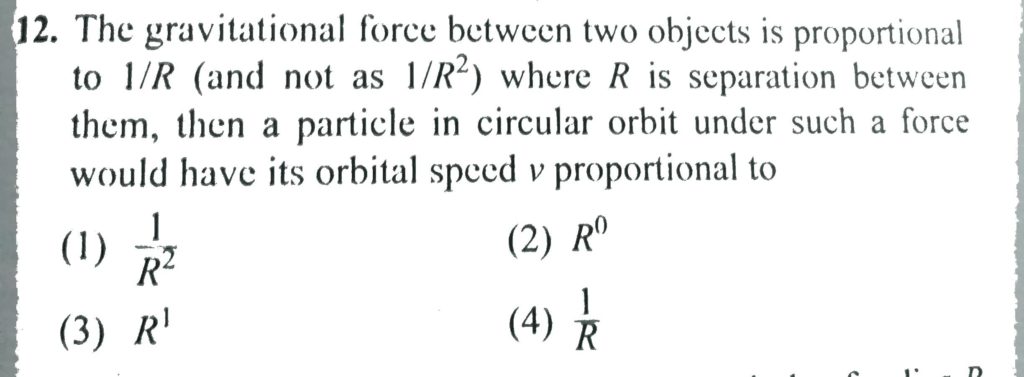



The Gravitational Force Between Two Objects Is Proportional To 1 R And Not As 1 R2 Where R Is Separation Between Them Then A Particle In Circular Orbit Under Such A Force Would Have
Oct 31, · All objects having mass attract each other with force known as the gravitational force It is quite noticeable in astronomical objects such as Sun, Earth, and Moon that have enormous masses The reason is that the force is proportional to the products of the objects'Newton's most important contribution to our understanding of gravity was that objects fall toward Earth when dropped a true b false According to the Law of Universal Gravitation, the force of gravity between two objects is directly proportional to a the distance between the objects b the product of the masses of the objects c the gravitational constantJun 29, 21 · One is when the force is proportional to distance, as we see in springs and Hooke's law The other is when the force is inversely proportional to the square of the distance, as we see in gravity (among other forces) This says that if one observes closed bound orbits, one can be certain that the forces involved are one of those two



1




Gravitational Forces Video For Kids 6th 7th 8th Grade Science
Gravitational force F between two objects is inversely proportional to the square of the distance between them, ie, When the distance between two objects is doubled, the force becomes onefourth of its original valueTranscribed image text Question 2 (1 point) Saved Gravity between two objects is proportional to the product of their masses and proportional to the square of the distance between them OA) indirectly, directly O B) directly, directly C) indirectly, indirectly OD) directly, indirectly Question 11 (1 point) Saved Virtually no one acknowledged Galileo's work during hisThe gravitational force between two objects is proportional to their masses and inversely proportional to the square of the distance between their centers G m 1 m 2 r 2 F = (Newtons) • F is an attractive force vector acting along line joining the two centers of masses • G = Universal Gravitational Constant G = 667 x 1011 Nm2/kg2




If The Gravitational Force Between Two Objects Were Proportional T



Newton S Law Of Universal Gravitation
Gravitational force an attractive force that exists between all objects with mass;Apr 01, · Mass is the measure of the amount of matter in an object We see that the gravitational force between objects increases as the masses of the objects increase With distance, we see that the strength of gravity decreases if the distance between two objects increases Click to see full answerWhat happens to the gravitational force between two objects when the distance between them is (i) doubled?




A Cyberphysics Page




Gravity Explained Simply Moomoomath And Science
The gravitational force between two objects is proportional to the product of the masses of the two objects The gravitational force between two objects is inversely proportional to the square of the distance between the two objectsGravitational Force – Equation – Formula Gravity was the first force to be investigated scientifically The gravitational force was described systematically by Isaac Newton in the 17th century Newton stated that the gravitational force acts between all objects having mass (including objects ranging from atoms and photons, to planets and stars) and is directly proportional to the massesThe gravitational force between two objects is proportional to the square of the distance between the two objects The gravitational force between two objects is inversely proportional to the product of the masses of the two objects




Solved Find The Gravitational Force Between Two O




Mastering Physics Solutions Chapter 12 Gravity A Plus Topper
May 08, · You can see a huge difference between these values of gravitational force F g The gravitational force between the two chairs is 6673 × 109 N which is very very negligible (As compared to gravitational force between earth and the chair which is 9814 N) Therefore, All the objects are attracted downwards towards the center of earthThe gravitational force between two objects is proportional to 1/R (and not as 1/R^2) where R is separation between them, then a particle in a circular orbit under such a force would have its orbital speed ν proportional toFeb 25, 02 · However, for most applications, gravity is well approximated by Newton's law of universal gravitation, which describes gravity as a force causing any two bodies to be attracted toward each other, with magnitude proportional to the product of their masses and inversely proportional to the square of the distance between them




Gravitationalforcese




Section 4 Universal Forces Key Concepts What Force
Jun 12, 18 · r is the distance between them From equation (1) it is clear that the force of gravity between two masses is directly proportional to the product of their masses and inversely proportional to the square of the distance between them So, the gravitational force between two objects is directly proportionalto the product of the masses of the objectsJun 04, 19 · To begin, turn on the Show force vector checkboxes for objects A and B The arrows coming from each object are vectors that represent gravitational force The length of each vector is proportional to the force on each object Move object A aroundDec 08, · Two major factors, mass and distance, affect the strength of gravitational force on an object You witness the first factor in everyday life more massive objects are heavier The second factor, distance, is less familiar, as it takes a distance of many thousands of kilometers to significantly weaken the pull of Earth's gravity




What Happens To The Force Of Gravity If The Distance Between The Objects Doubled Or Tripled Explain By A Diagram Quora
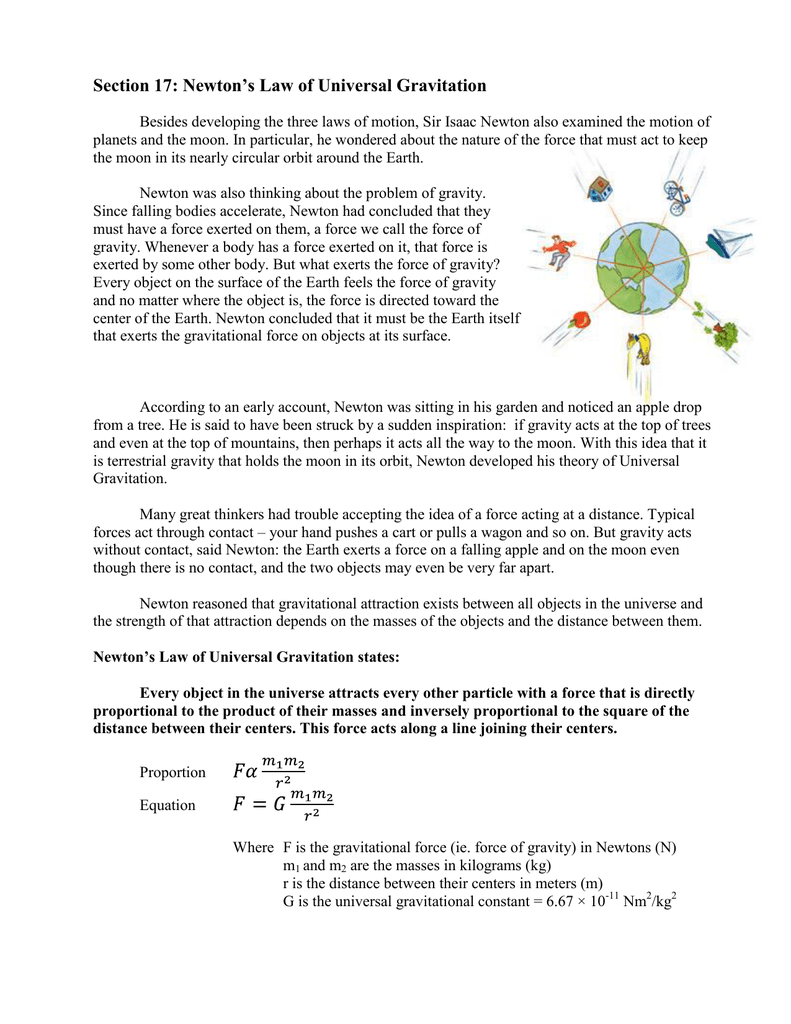



Section 17 Newton S Law Of Universal Gravitation
Force of Gravity Everybody in the universe attracts every other body with a force called the force of gravitation or force of gravity The gravity of the force of attraction between the earth and any object lying on or near its surface Gravitation is the force of attraction between any two objectsNov 05, · The Law of Universal Gravitation states that the gravitational force between two points of mass is proportional to the magnitudes of their masses and the inversesquare of their separation, d (552) F = G m M d 2 However, most objects are not point particlesThe gravitational force between two objects is inversely proportional to the square of the distance between the two objects The gravitational force between two objects is proportional to the product of the masses of the two objects



Gravitational Field




The Gravitational Force Between Two Objects Is F How Will This Force Change When Mass Of Each Object Is Quadruple Quora
The inverse square law proposed by Newton suggests that the force of gravity acting between any two objects is inversely proportional to the square of the separation distance between the object's centers Altering the separation distance (r) results in an alteration in the force of gravity acting between the objects Click to see full answerApr 10, 19 · If the gravitational force between two objects were proportional to (1/R) (and not as 1/R 2) where R is separation between them, then a particle in circular orbit under such a force would have its orbital speed v proportional to (A) (1 / R 2) (B) R 0 R 1 (D) (1/R)Nov 14, · The gravitational force between two objects, F= G (M₁x M₂)/r² (where r is the distance between the centre of the two masses) We have discussed above how to derive this law and how to modify




Gravitational Force Exploration




Gravitational Electric Forces Similarities Differences Video Lesson Transcript Study Com




Physicists Measure The Gravitational Force Between The Smallest Masses Yet Scientific American



1




Which One Of The Following Does Not Accurately Describe The Unive




Giving Information Book Chapter Iopscience




Newton S Laws And Weight Mass Gravity Video Lesson Transcript Study Com
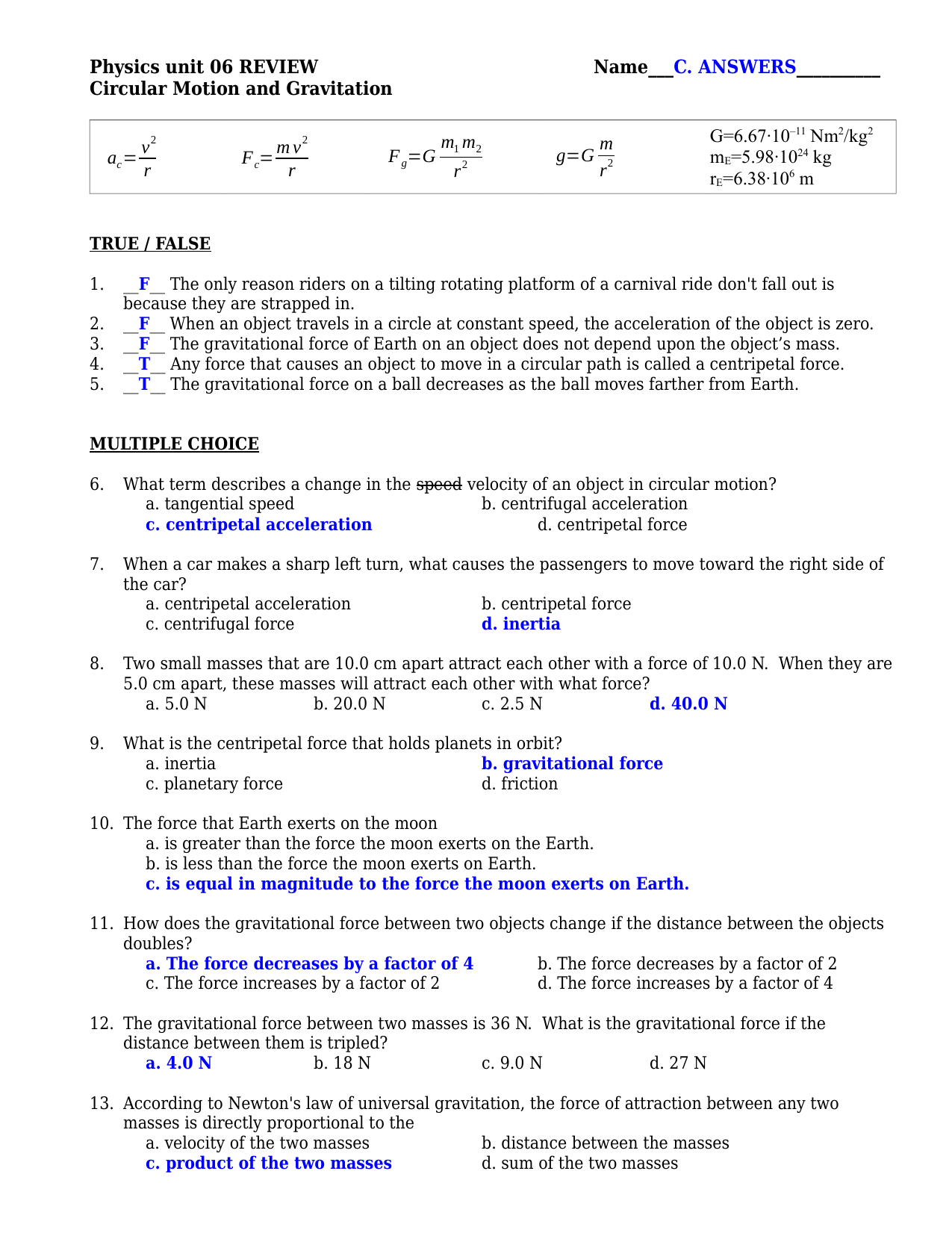



Physics Unit 06 Review Name C Answers




Gravity Exploration Worksheet Answer
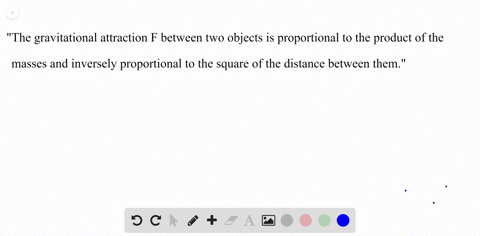



Solved The Gravitational Force Of Attraction Betw




Choose One Answer A The Descubre Como Resolverlo En Qanda




What Happens To The Gravitational Force Between Two Objects If I The Mass Of One Object Is Brainly In



Newton S Law Of Universal Gravitation
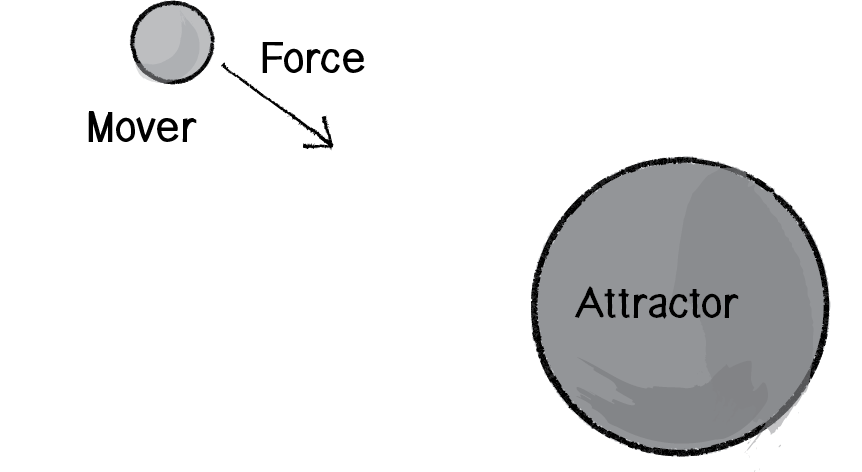



Gravitational Attraction Article Forces Khan Academy




Lakhmir Singh Physics Class 9 Solutions For Chapter 3 Gravitation Free Pdf




Gravity Formula Universe Today




Law Of Gravity




Chapter 12 Forces And Motion Warmup Sept 10




Potential Anu Kilelic Unuite Alf The Gravitational Force Between Two Objects Were Proportional To 1 R




The Gravitational Force Between Two Objects Of Masses M1 And M2 That Are Seperated By Distance R Is Masteringphysicsanswers




Assertion When Distance Between Bodies Is Doubled And Also Mas




Newton S Universal Law Of Gravitation Physics




Gravity Newton S Law Of Gravity Britannica



Http Www Physics Usu Edu Snively 1800 Phys1800 Lecture12 10 Pdf




Gravity




Law Of Gravity




If Gravitational Force Between Two Objects Were Proportional To 1 R Where R Is Separation Beteeen Them Brainly In




Gravitational Force Gravitational Force Is The Force Of




What Happens To The Gravitational Force Between Two Objects If I The Mass Of One Object Is Doubled Ii The Distance Between The Objects Is Doubled And Tripled Iii The Masses Of




Gravity Between Two Objects Is Proportional To The Chegg Com




What Change Will Occur In The Gravitational Force Between Two Bodies If The Distance Between Them Is Halved But Their Mass Remains Constant Quora




Gravitational Force Flip Ebook Pages 1 35 Anyflip Anyflip



1



Gravitational Field




Newton S Law Of Universal Gravitation Wikipedia



Universal Law Of Gravitation Learn Physics Class 9 Amrita Vidyalayam Elearning Network
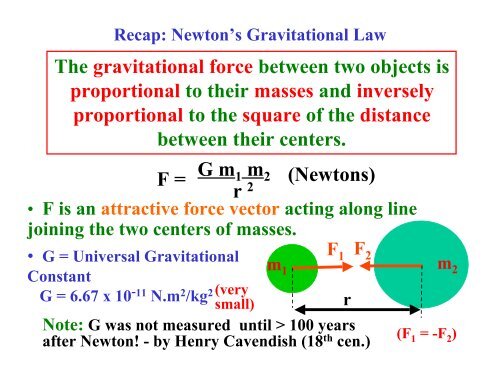



The Gravitational Force Between Two Objects Is Proportional To Their



Gravity




Gravitational Force What Is Gravity Guide To Astronomy
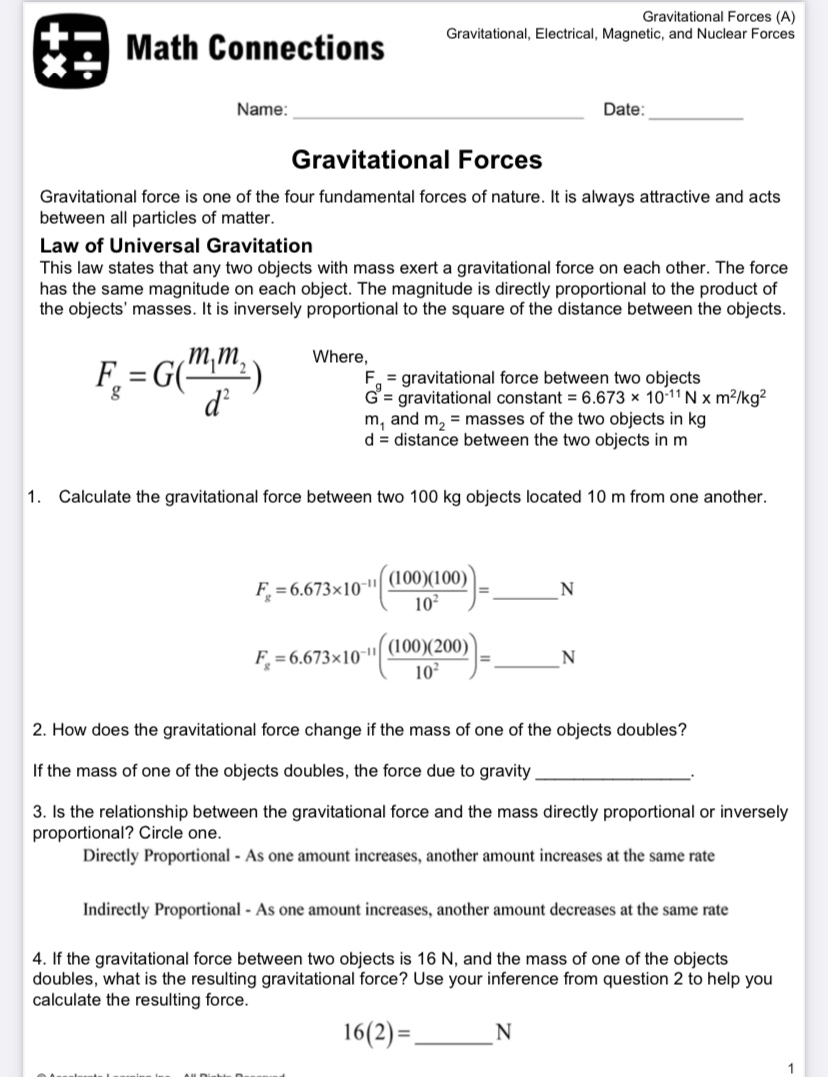



Answered Calculate The Gravitational Force Bartleby




Gravity Is An Attractive Field Force That Acts Between Objects With Mass Gravity Is An Attractive Field Force That Acts Between Objects With Mass




The Gravitational Force Between Two Objects Is Proportional To1 R And Not As 1 R 2 Where R Is Separation Between Them Then A Particle In A Circular Orbit Under Such A Force Would Have




Which Of The Following Statements Are True Check All Chegg Com




Mastering Physics Solutions Chapter 12 Gravity A Plus Topper




Different Gravity Nasa




Gravitation Notes Videos Qa And Tests Grade 10 Science Force Kullabs




Gravitation




Motion Under Gravity 1 Gravitational Force Openlearn Open University S103 3




Gravity Notes Delsea 1st Year Physics
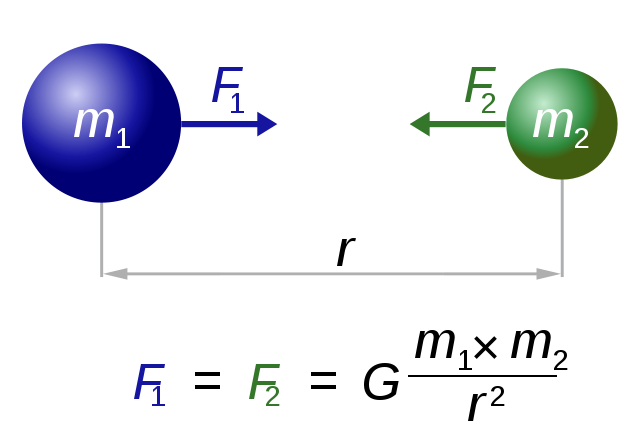



11 1 Tidal Forces Introduction To Oceanography




Douille 43 If The Gravitational Force Between Two Objects Were Proportional To 1 R Where R



What Happens To The Gravitational Force Between 2 Objects When The Mass Increases Keeping Their Distance Constant And Why Quora




Two Factors That Affect How Much Gravity Is On An Object
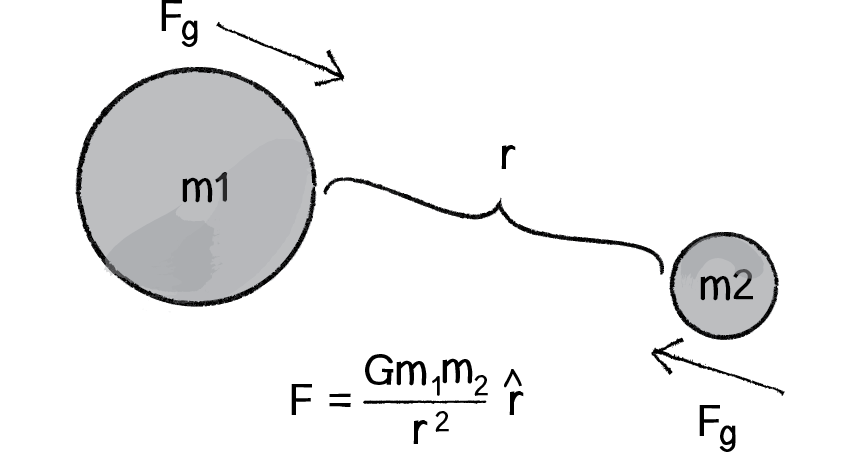



Gravitational Attraction Article Forces Khan Academy




The Gravitational Force Between Two Objects Is Propo Physics



Http Www Azleisd Net Cms Lib6 Tx Centricity Domain 171 6 1 Universal gravitation ws 4e Pdf




Force Of Gravity Between The Two Objects Is Directly Proportional To The Product Of Their Masses And Force Of Science Gravitation Meritnation Com



Oxford Edupage Org Files Finals Help Gravity Lab Year 9 Answers Pdf
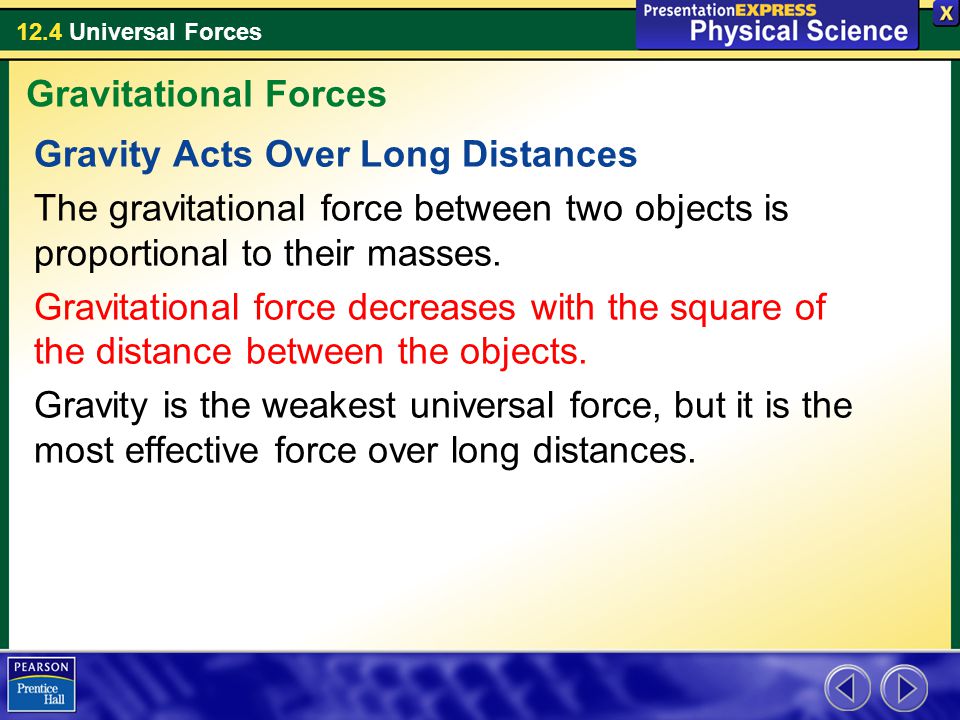



Universal Forces Act Over A Distance Between Particles Of Matter Ppt Video Online Download




Exerci 1 The Gravitational Force Between Two Objects Is Proportional To 1 R And Not As




If The Gravitational Force Between Two Objects Were Proportional To 1 R And Not As 1
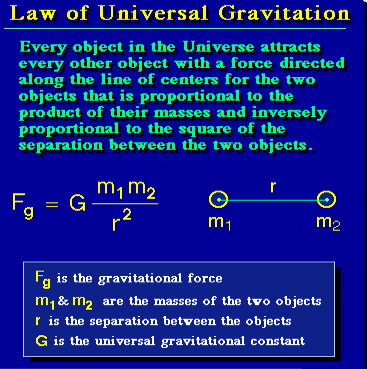



Law Of Gravity
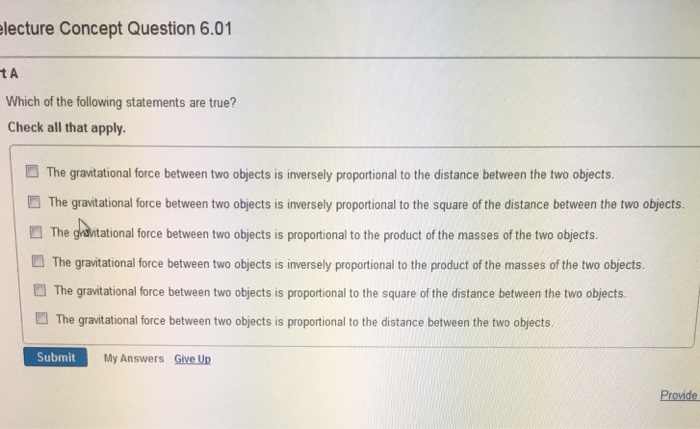



Lecture Concept Question 6 01 T A Which Of The Chegg Com
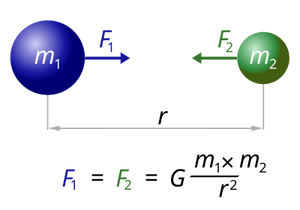



Gravitational Constant Units Of Measurement Wiki Fandom




Chapter 12 A Satellite Orbits The Earth With




Gravitational Force In Physics Problems Dummies




Newton S Law Of Universal Gravitation Newton Was Able To Explain Kepler S 1 St And 3 Rd Laws By Assuming The Gravitational Force Between Planets And The Ppt Download




Physics Section 7 2 Apply Newton S Law Of Universal Gravitation Gravitational Force Gravity Is The Mutual Force Of Attraction Between Particles Of Matter Ppt Download



2



1




The Gravitational Force Between Two Objects Is Proportional To 1 R And Not As 1 R2 Where R Is Separation Between Them Then A Particle In Circular Orbit Under Such A Force Would Have



Sir Isaac Newton The Universal Law Of Gravitation



The Gravitational Force Between Two Object Is F How Will This Force Change When Distance Between Them Is Reduce To Half Quora




Gravity




Gravity The Thing That Causes Objects To Fall To Earth Ppt Download




13 1 Newton S Law Of Universal Gravitation University Physics Volume 1




The Gravitational Force Between Two Objects Is 100n How Should The Distance Between These Objects Be Brainly In
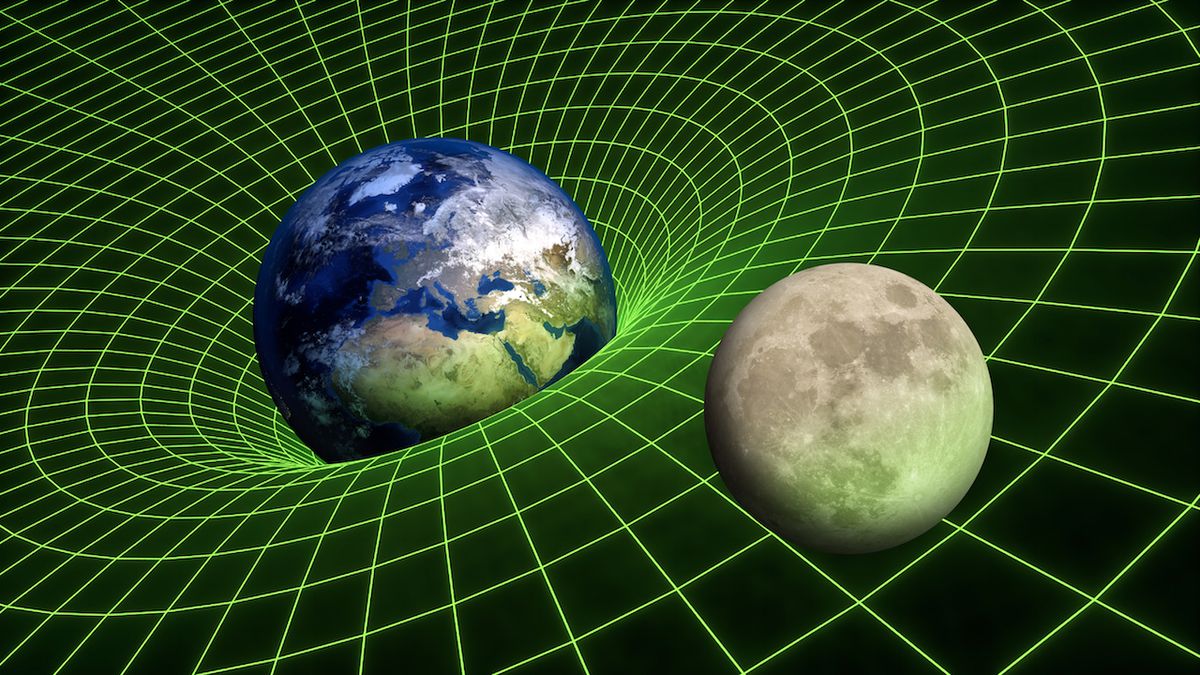



What Is Gravity Live Science
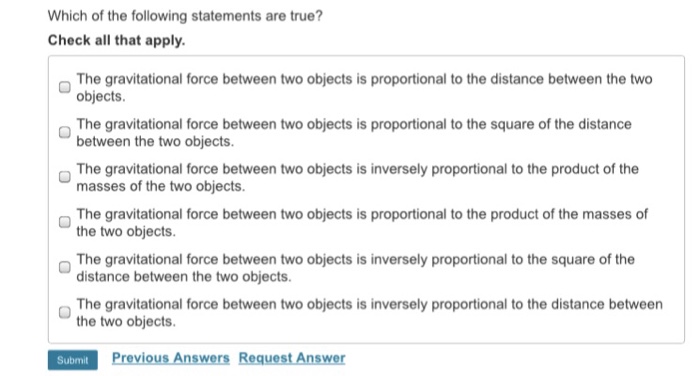



Which Of The Following Statements Are True Check All Chegg Com
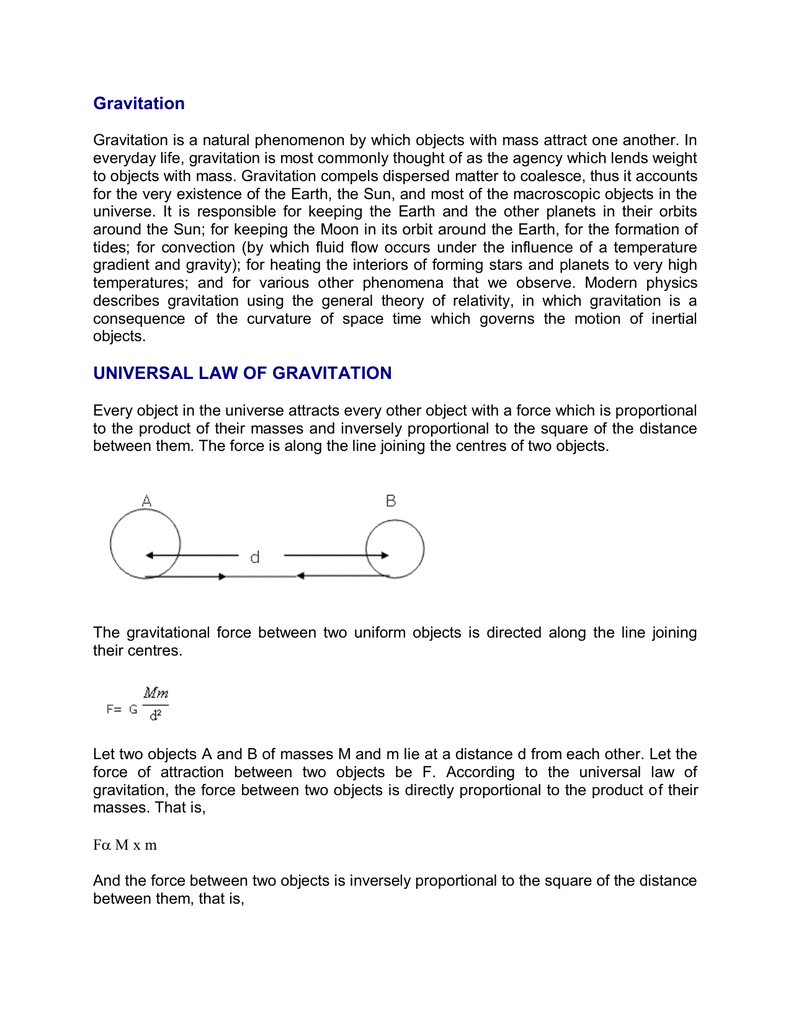



Gravitation Universal Law Of Gravitation
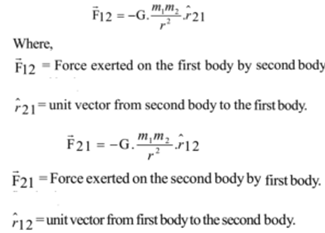



Newton S Law Of Gravitation Statement Explanation Problems




37 Hf The Gravitational Force Between Two Objects Were Prop Scholr


コメント
コメントを投稿